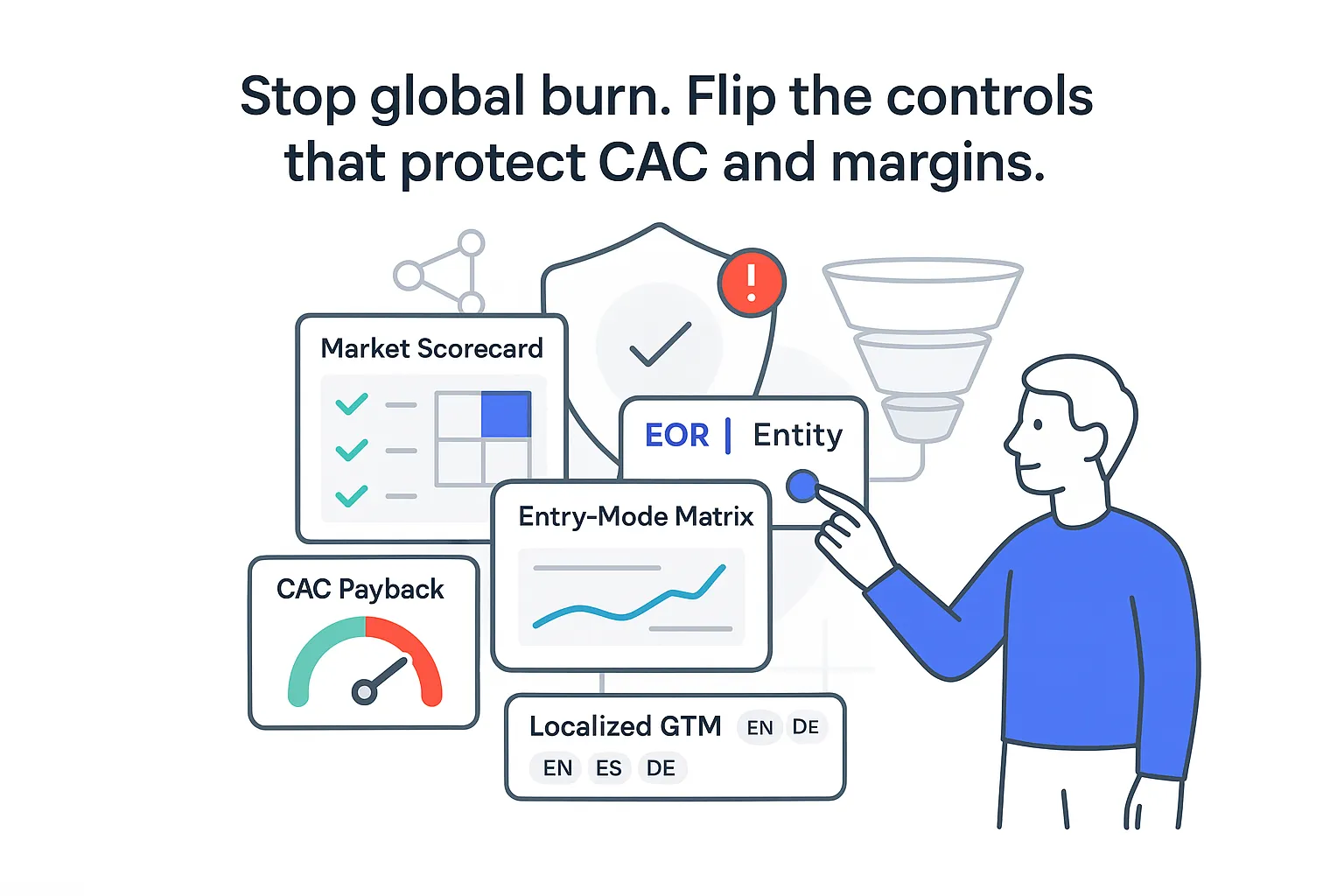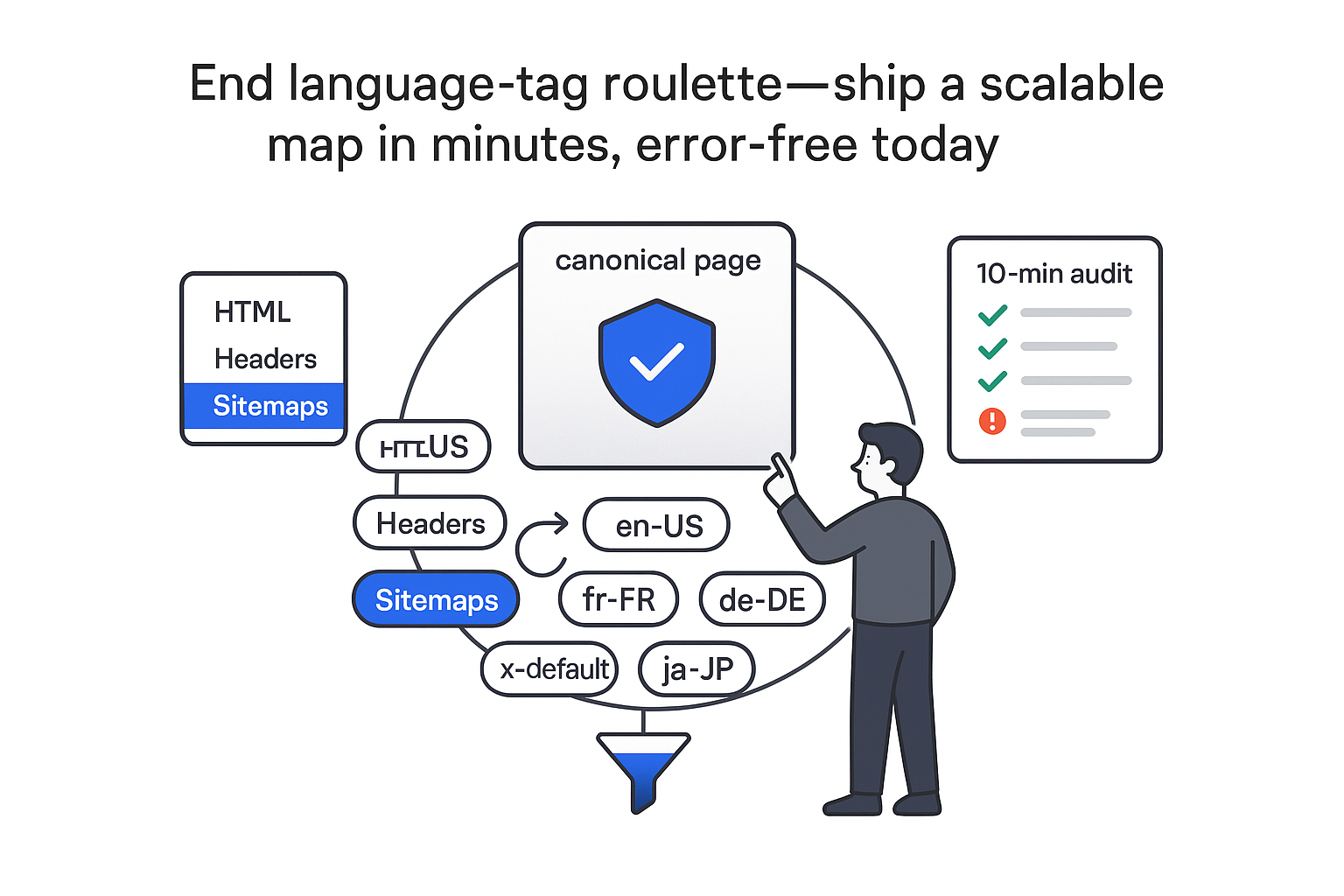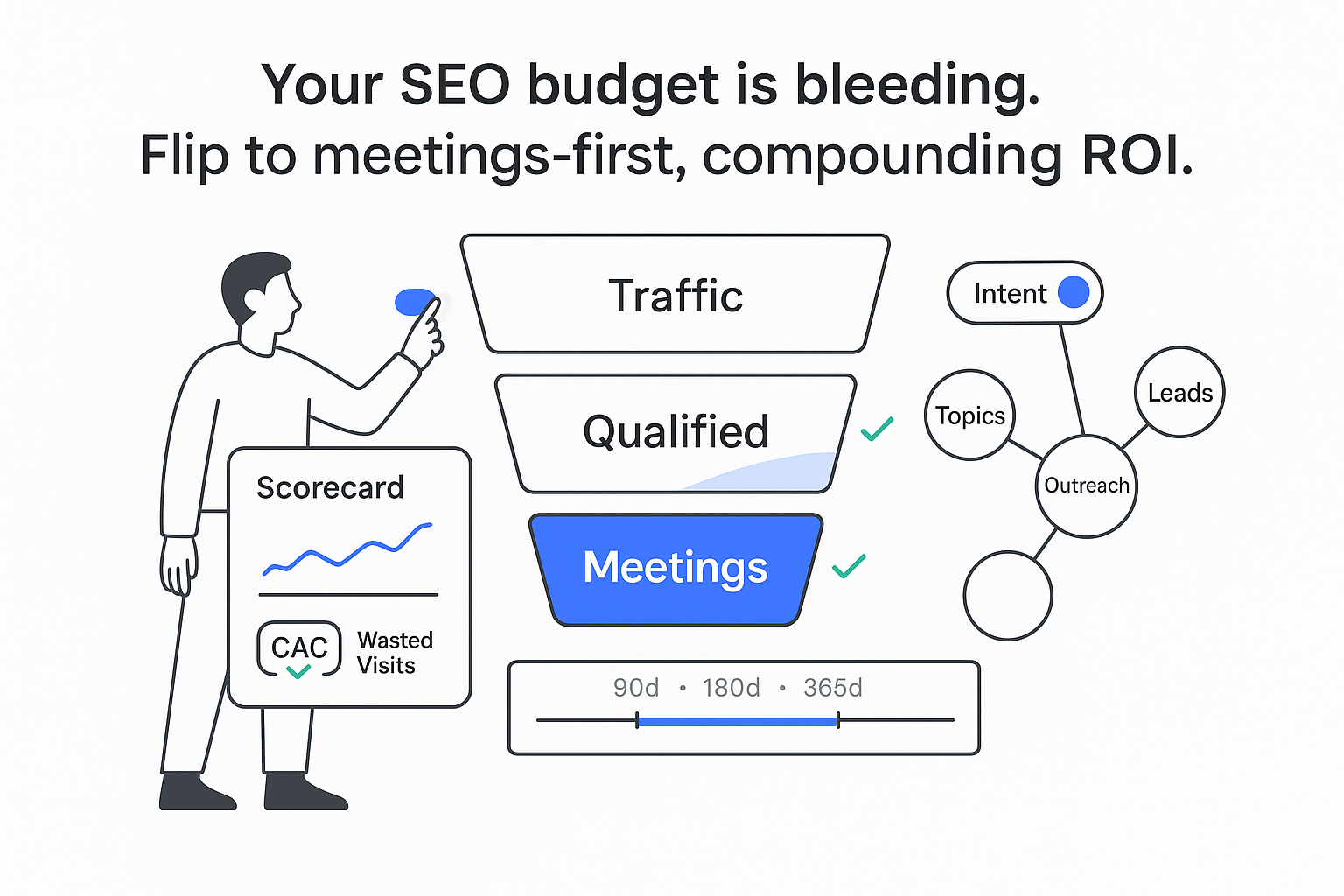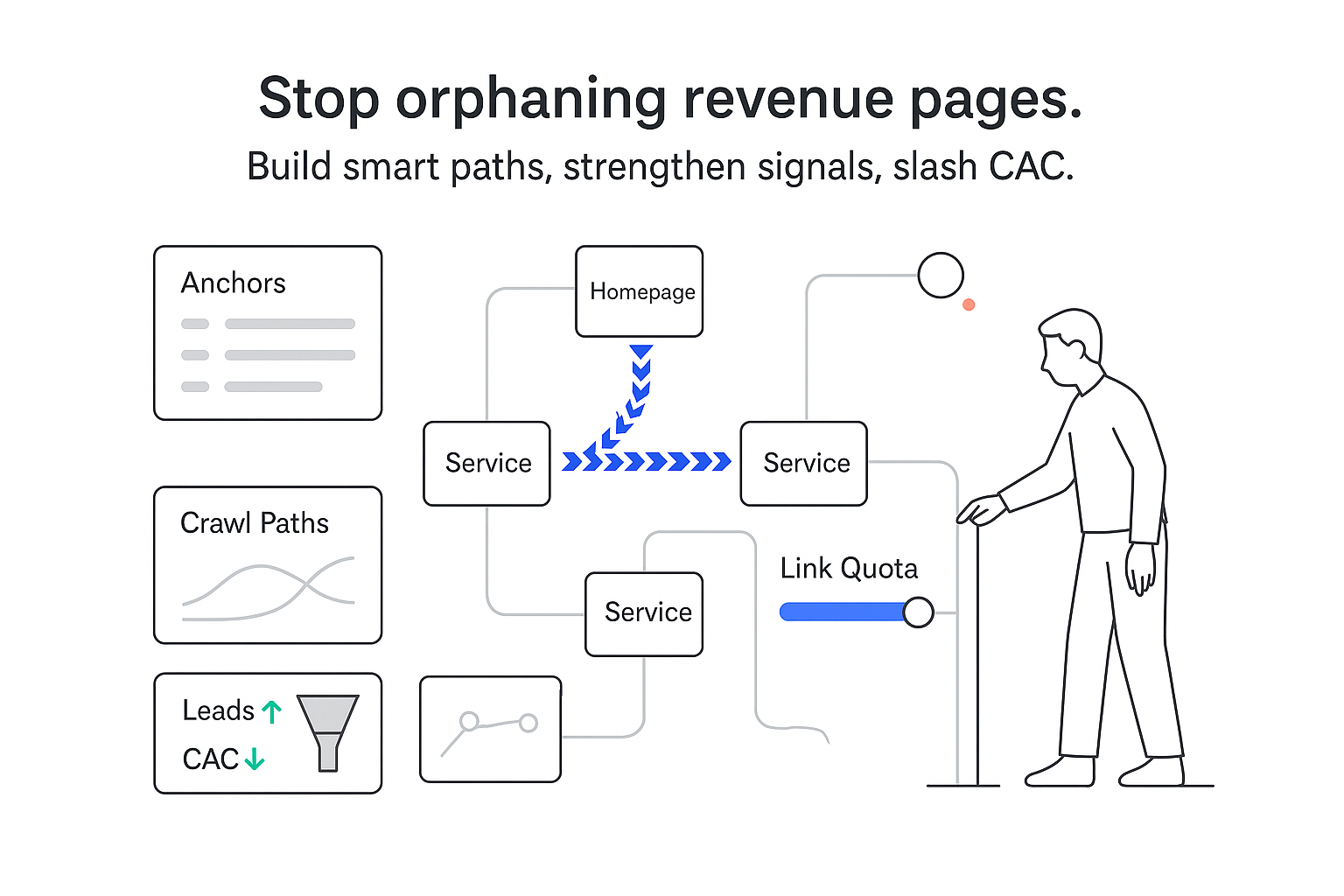Crossing borders with a B2B service is exciting - and a little nerve-wracking. I want growth without chaos, so I codify an international expansion strategy that ties every move to revenue, margin, and speed. Done well, it reduces guesswork, aligns teams, and makes results more predictable. Speed matters, yet patience pays; the real skill is deciding where to move fast and where to be careful. For a sober view of why structure matters, see Harvard Business Review.
What a solid international expansion strategy looks like
I define an international expansion strategy as a plan to enter and grow in new countries with measurable ROI. It sets market priorities, chooses the right entry mode, maps a localized go-to-market, and locks in operations that can scale without adding friction.
Quick-start framework for B2B service firms:
-
Set revenue and ROI targets
- I aim for concrete numbers: pipeline target per country, CAC payback under 12 months, gross margin at or above home market, and time to first deal within 90 days.
- CAC payback = fully loaded CAC / (monthly gross margin dollars per customer).
-
Shortlist markets with CAGE, PESTLE, and TAM/SAM/SOM
- I use CAGE (Pankaj Ghemawat) to assess distance across culture, administrative/legal, geography, and economics.
- I run PESTLE to scan regulation, tax, and political risk.
- I size near-term demand with TAM/SAM/SOM to see where revenue can land in the next 12-24 months.
-
Pick an entry mode that matches risk and control
- Options include cross-border delivery, licensing/white-label, franchising, partnerships/JVs, M&A, or greenfield. See an overview of different ways to enter a new global market.
- I add EOR/PEO for fast hiring without forming an entity when the compliance profile allows.
-
Build a localized GTM
- I keep one global sales spine (ICP, stages, qualification), then adapt positioning, pricing, channels, proof, and sales plays by country.
-
Pilot, measure, scale
- I launch with one tight segment, capture early learnings, and expand to adjacent segments once unit economics clear my thresholds.
A 90-day launch blueprint
- Days 1-30: Market scorecard, demand signals, early partner map, and an ROI model. I validate price points with 10-15 buyer interviews.
- Days 31-60: Confirm entry mode, decide EOR vs entity, complete data and tax review, finalize GTM, messaging, and local proof plan. I start sourcing talent.
- Days 61-90: Pilot launch. First campaigns live, first meetings set, partner intro calls, weekly scorecards. I debrief biweekly to tune pricing, messaging, and channel mix.
KPIs and ROI levers that keep me honest
KPI list
- Qualified pipeline by segment and country
- CAC and CAC payback
- Gross margin by country
- Ramp time per rep or pod
- Win rate, sales cycle length, and deal velocity
- Partner-sourced pipeline share
- Lead quality and conversion by stage
- Delivery SLA attainment and CSAT
- Net revenue retention (NRR) once the first cohort matures
ROI levers worth pulling
- Right-sized price points by country tier
- Nearshore or follow-the-sun delivery to lower unit costs
- Focused verticals with higher ACVs
- Partner attach on every deal to shorten cycles and add proof
The tangible upsides of going global
Global expansion delivers reach, resilience, and talent. The upside becomes real when I attach numbers and timelines, even if the examples are illustrative. Stronger diversity often correlates with innovation and growth - see Boston Consulting Group.
Access to new markets and customers
Example: A data security firm adds the DACH region, positions around local standards, and sees a 30% lift in average deal size within two quarters.
Product standardization where it makes sense
Example: A fixed-fee audit package for privacy assessments is standardized across the EU. Delivery time drops 25%, and margins rise 8 points.
Global brand lift
Example: A public case study with a respected enterprise in Singapore helps open doors in Australia within six weeks.
Diversified revenue streams
Example: A US slowdown hits Q1. APAC adds two managed service contracts that keep quarterly revenue on plan.
Diversified and skilled workforce
Example: A nearshore pod in Bogotá handles data engineering sprints, covering late-day US hours to hit 24-hour turnarounds without overtime.
B2B service-specific gains that move the P&L
- 24x5 delivery through distributed teams with clean handoffs
- Higher ACVs in mature markets that support multi-year agreements
- Currency diversification to smooth earnings
- Proximity to enterprise buyers for faster meetings, local references, and bid compliance
I set goals early. A healthy target for many firms is 20-30% of revenue from new countries within 18-24 months while keeping margin at or above home levels. Actual performance varies by segment, entry mode, and regulatory complexity.
Choosing a global vs local posture
I think in terms of two forces: how much I integrate globally, and how much I adapt locally. For a deeper primer, review common strategies to expand internationally.
International strategy
What it is: Core service and IP created at home, delivered in new markets with limited changes.
When to use: Early stage, high-expertise services, or where local needs mirror the home market.
Example: A niche cloud migration team sells and delivers remotely to the UK with minor message tweaks.
Multi-domestic strategy
What it is: Heavy local adaptation by country - research, marketing, and delivery.
When to use: Services shaped by culture, language, or regulation that varies widely.
Example: A people advisory firm reworks HR content, playbooks, and workshops for Japan and France.
Global strategy
What it is: Highly integrated and standardized across countries for efficiency and a single brand experience.
When to use: Services invisible to end users or where compliance is uniform.
Example: A managed database service with the same SLA and stack across regions.
Transnational strategy
What it is: High global integration with high local adaptation - shared IP and platforms with in-country tuning.
When to use: Consultancies and managed services where clients expect proven methods plus local nuance. Learn more about a transnational strategy.
Example: A cybersecurity practice keeps a global threat intel core while adapting incident playbooks for regional laws.
Executive decision rubric
- Degree of regulatory variation by country
- Need for face-to-face delivery
- IP reuse potential across markets
- Sales cycle length and procurement norms
- Talent availability and wage bands
Pivot paths if market facts change
- International to transnational: keep global IP, stand up local pods, codify what stays global vs local.
- Multi-domestic to transnational: unify core playbooks and tooling, retain only the country moves that lift win rate or ensure compliance.
Entry modes: speed, control, and risk
Entry modes shape cost, risk, and the pace of learning. I match the mode to goals, then pressure-test with local counsel and trusted partners. For a full overview of structures and trade-offs, see these academic notes on different ways to enter a new global market.
Cross-border service delivery
- Use when: I can sell and deliver from home with video, local language support, and in-country references.
- Speed: Fast | Control: High | Cost: Low-Medium
- Risk: Data and tax exposure if delivery touches local systems or creates permanent establishment (PE) risk.
Licensing or white-label
- Use when: I can license IP, frameworks, or software to a local firm.
- Speed: Fast | Control: Low-Medium | Cost: Low
- Risk: IP leakage, quality drift.
Franchising
- Use when: The service model can be replicated with playbooks and training.
- Speed: Medium | Control: Medium | Cost: Medium
- Risk: Brand consistency, legal constraints.
Partnering, alliances, or JVs
- Use when: I need local brand, distribution, or compliance cover.
- Speed: Medium | Control: Shared | Cost: Medium
- Risk: Culture clash, shared decision friction.
M&A
- Use when: I need instant scale, contracts, and a team on day one.
- Speed: Fast after close | Control: High | Cost: High
- Risk: Integration failure, retention risk, goodwill write-downs.
Greenfield
- Use when: I want full control and long-term presence.
- Speed: Slow | Control: High | Cost: High
- Risk: Setup delays, unknowns.
Modern service-first options
- EOR/PEO for rapid local hiring without an entity
- Distributor/agent models for regulated sectors
- Reseller channels with revenue share and co-marketing
Contract clauses I never skip
B2B service nuances to bake into contracts
- Data privacy and residency clauses
- SLAs with clear remedies
- IP ownership, code escrow, and reuse rights
- Local tax handling for services and digital products
Simple weighted decision matrix
- Criteria: Speed, Control, Cost, Risk, Compliance fit
- Example weights: Speed 25, Control 25, Cost 20, Risk 20, Compliance 10
- I score each mode 1-5, multiply by weights, pick the highest total, then recheck with legal before final sign-off.
The risk map - and tested mitigations
Risks are real, but each one has a playbook. I assign explicit owners so nothing slips. Government guidance can help - see the International Trade Administration.
Legal and regulatory compliance
- Risks: Entity setup, permanent establishment, VAT/GST, withholding tax, labor law, data laws (e.g., GDPR), IP.
- Fixes: Local counsel, tax advisors, privacy tooling, IP registration, and a compliance checklist.
- Owner: General Counsel and CFO.
Language, culture, and politics
- Risks: Missed cues, low trust, and messaging that falls flat.
- Fixes: Native copywriters, translation QA, cultural reviews, and local case studies.
- Owner: Marketing lead with a local advisor.
Local competitors
- Risks: Price pressure and long cycles versus known brands.
- Fixes: Differentiated proof, win-loss analysis, ABM with intent data, and partner attach.
- Owner: Country manager and sales leader.
High upfront costs
- Risks: Cash squeeze before revenue lands.
- Fixes: EOR to start, phased hiring, one-vertical focus, milestone-based spend.
- Owner: CFO.
Communication and time zones
- Risks: Slow handoffs and missed context.
- Fixes: Async playbooks, decision notes, shared docs, weekly global sprint review. Brush up core business communication practices.
- Owner: COO or operations lead.
Multi-currency finance
- Risks: Fees, FX swings, reconciliation headaches. Many SMEs report FX volatility as a constraint - see American Express research.
- Fixes: Multi-currency accounts, light hedging, agreed revenue recognition rules.
- Owner: CFO and controller.
Corruption and IP theft
- Risks: Reputational harm and loss of IP.
- Fixes: Due diligence on partners, staff training, audit trails, tight access controls.
- Owner: Legal and security.
Managing distributed teams
- Risks: Culture drift and uneven quality.
- Fixes: Clear goals, one delivery method, playbook training, peer reviews, shared QA.
- Owner: Delivery lead and HR.
A practical, CEO-friendly plan
Here is a sequence I use to align with CEO priorities and keep reporting tight.
-
Set goals and an ROI model
- Targets for pipeline, revenue, CAC payback, and margin.
- Build a simple model with three price points and expected conversion by stage.
-
Market research
- Demand signals, competitor scan, regulatory checks, and talent availability.
- I pull from web traffic and search intelligence, LinkedIn data, trade reports, and local salary benchmarks.
-
Competitive teardown
- Pricing, delivery model, proof, and channel mix.
- I produce a gap list that shows where I can win fast.
-
Choose strategy type and entry mode
- I use the 2x2 for strategy and a weighted matrix for entry. For definitions, compare multidomestic, global, and transnational approaches in these strategies to expand internationally.
- I pressure-test in one country first before scaling.
-
Localized GTM
- Positioning, pricing, channels, partnerships, content and translation, sales enablement, and a case-study plan.
- I align to how buyers purchase in that country.
-
Compliance and tax
- Entity vs EOR, payroll, benefits, privacy, IP, and tax registrations.
- I keep a single source of truth for approvals and obligations. Government resources like the International Trade Administration help with local rules.
-
Org design and hiring
- Country manager or player-coach first; then SDR/BDR, solution lead, and a delivery pod as pipeline grows.
-
Pilot with milestones and exit criteria
- Examples: 500k in qualified pipeline by day 90, first deal by day 120, CAC payback on track.
- If I miss, I change one lever at a time - or pause.
-
Instrumentation and cadence
- Weekly scorecards, biweekly plan reviews, and a monthly board-level summary that ties actions to outcomes.
Core artifacts I maintain
- Market scorecard and total addressable demand snapshot
- 30/60/90 plan with owners
- Entry mode decision memo
- Country GTM plan and message map
- Pricing and packaging by country tier
- Compliance and tax tracker
- Hiring plan and role scorecards
- Pilot dashboard and meeting cadence
Sample Gantt-style timeline
- Weeks 1-2: Research and scorecard
- Weeks 3-4: Strategy type and entry-mode decision
- Weeks 5-6: GTM and pricing
- Weeks 7-8: Compliance setup and talent sourcing
- Weeks 9-10: Content, campaigns, and partner intros
- Weeks 11-12: Pilot live and weekly scorecards start
When the timing is right
Good timing saves money. A short readiness check avoids false starts.
Readiness checklist
- Stable product-market fit at home
- Repeatable sales motion and at least three reference customers in the target vertical
- Cash runway that covers 12-18 months of effort
- Leadership bandwidth for one more country without hurting the core
- Interest from at least two local partners or advisors
Poor timing signals
- High churn or service quality issues at home
- Rising cash burn without a path to payback
- No clear ICP or winning message
Sector notes after the remote-work surge
- Buyers are more open to cross-border vendors. Remote delivery is normal in most service categories.
- Compliance and data privacy still need careful planning, yet video, async updates, and in-product collaboration reduce travel and speed delivery.
Three-tier timing framework
- Now: I hit the readiness checklist, can fund one pod, and see inbound interest from the target country.
- Next: One or two gaps remain. I close them within a quarter, then launch.
- Later: More than two gaps or cash risk. I park the plan, fix the core, then revisit.
Objective readiness scorecard
- I score 0-5 on fit, ICP proof, cash, partner interest, ops capacity, and compliance.
- 18-20 = go; 14-17 = fix and check again in 60 days; below 14 = pause.
Capacity planning tip
I protect the core. I cap shared team load at a clear percentage and create a small, focused country squad that moves fast without draining home teams.
Working with partners without losing control
If I bring in a partner, the goal is less risk, more speed, and ownership of outcomes without micromanagement. I ask for clear artifacts and a reporting cadence that ties actions to numbers.
What I expect from a strong expansion partner
- B2B service specialization with a playbook from market selection to activation - a solid Playbook is a plus.
- KPI-linked planning with weekly scorecards and transparent reporting
- Compliance strength and in-country partner networks
- A track record of building pipeline and closing enterprise deals in multiple regions
- Risk-sharing or milestone-based agreements once the plan is defined
What I should receive
- Market scorecard and entry-mode decision memo
- Localized positioning and pricing
- Channel and partner plan with named targets
- Sales plays and enablement assets my team can run immediately
- A dashboard covering pipeline, CAC, margin, and ramp time
Sample 90-day engagement shape
- Days 1-30: Buyer and partner interviews, market scorecard, ICP and positioning, early pricing hypotheses, entry-mode recommendation.
- Days 31-60: Full GTM, messaging built, partner outreach, hiring plan, compliance checklist.
- Days 61-90: Campaigns live, first meetings on the calendar, partner pilots active, weekly scorecards, and a decision gate with clear next moves.
How accountability shows up
- One owner per workstream
- Weekly reviews with actions and forecasts
- Red flags documented with fixes and owners
- Month-end memo linking decisions to revenue, margin, and risk
If a partner cannot show the playbook and the reporting cadence on day one, I keep looking. An international expansion strategy deserves a team that treats outcomes as their job, not mine.







.svg)